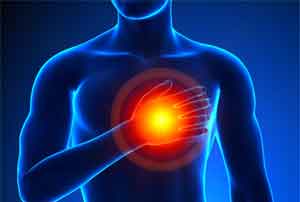- Home
- Editorial
- News
- Practice Guidelines
- Anesthesiology Guidelines
- Cancer Guidelines
- Cardiac Sciences Guidelines
- Critical Care Guidelines
- Dentistry Guidelines
- Dermatology Guidelines
- Diabetes and Endo Guidelines
- Diagnostics Guidelines
- ENT Guidelines
- Featured Practice Guidelines
- Gastroenterology Guidelines
- Geriatrics Guidelines
- Medicine Guidelines
- Nephrology Guidelines
- Neurosciences Guidelines
- Obs and Gynae Guidelines
- Ophthalmology Guidelines
- Orthopaedics Guidelines
- Paediatrics Guidelines
- Psychiatry Guidelines
- Pulmonology Guidelines
- Radiology Guidelines
- Surgery Guidelines
- Urology Guidelines
LVEF not an indicator of heart failure survival rates

Contrary to popular practice, a measure of the heart's pumping function known as "left ventricular ejection fraction" is not associated with the long-term outcomes of hospitalized heart failure patients, a UCLA-led study of Medicare patients has found. Hospitalized heart failure patients in all age groups within the study and with all levels of ejection fraction had significantly lower rates of survival after five years and a higher risk of re-hospitalization than people in the United States without heart failure. Better treatments for heart failure and new ways of predicting patient outcomes are needed, researchers concluded.
Heart failure occurs when the heart muscle is weakened and cannot pump enough blood to meet the body's needs. Ejection fraction is measured by ultrasound and shows how well the heart is pumping. Doctors use ejection fraction to guide treatment of heart failure patients and estimate their likelihood of re-hospitalization and survival. This is the first study to use national data to specifically categorize heart failure by three distinct ejection fraction subgroups.
Researchers used national data from the American Heart Association's Get With The Guidelines-Heart Failure program and the U.S. Centers for Medicare and Medicaid Services and included 39,982 patients from 254 hospitals admitted for heart failure from 2005 to 2009. The study categorized the patients into three distinct ejection fraction subgroups: normal, borderline and reduced.
These findings underscore the serious nature of a diagnosis of heart failure and the long-term risk associated with it, regardless of the heart's estimated pump function. Cardiologists need to find new strategies to better treat patients with heart failure, and prevent patients from developing heart failure in the first place.
The next stage of research will look at the specific causes of death for the different subgroups and determine potential treatment strategies to improve their outcomes.

Disclaimer: This site is primarily intended for healthcare professionals. Any content/information on this website does not replace the advice of medical and/or health professionals and should not be construed as medical/diagnostic advice/endorsement or prescription. Use of this site is subject to our terms of use, privacy policy, advertisement policy. © 2020 Minerva Medical Treatment Pvt Ltd